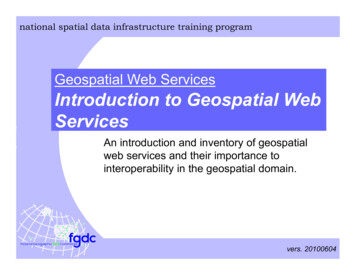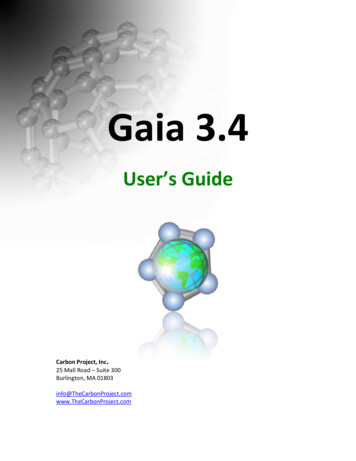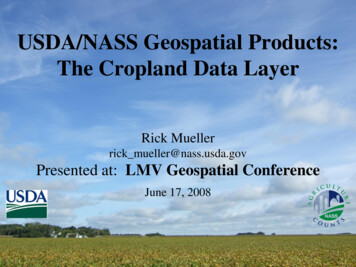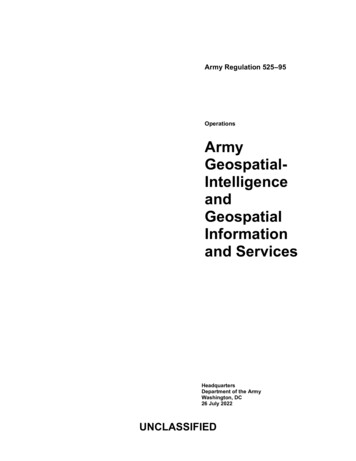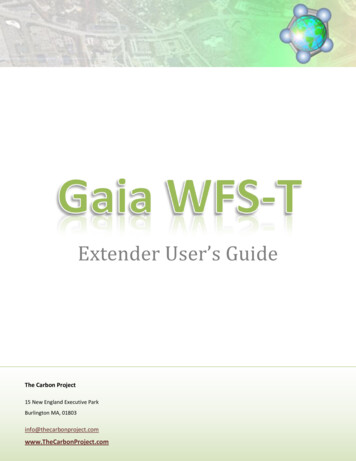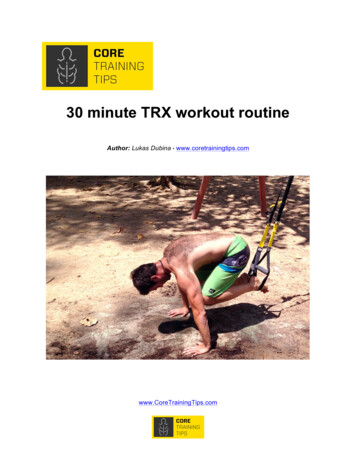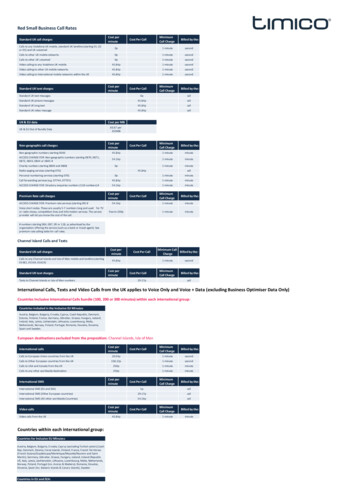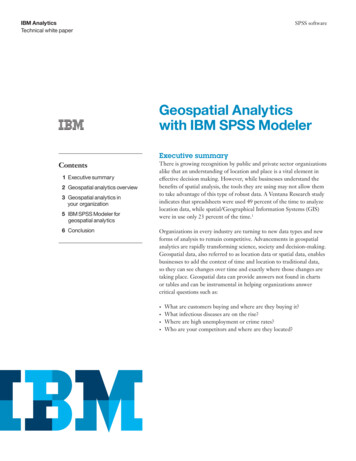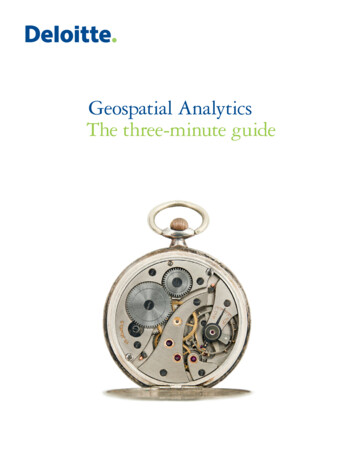
Transcription
Geospatial AnalyticsThe three-minute guide
Geospatial Analytics The three-minute guide 1
Why it matters nowThe human brain doesn’t work in rows and columnsOur brains often organize information based on time and place. But formany organizations, information is still confined to rows and columns.This makes reporting fast and easy—but not necessarily more insightful.Today, it is possible for organizations to add the context of timing andlocation to traditional data, creating maps that show changes over time andexactly where those changes are taking place. Maps make it easier for theeye to recognize patterns that were previously buried in spreadsheets, suchas distance, proximity, contiguity, and affiliation.2Geospatial Analytics The three-minute guide 3
Why geospatial analytics?Harness the power of placeToday’s technologies—mobile devices, location sensors, social media, andmore—allow organizations to collect time and place (“geo-referenced”) dataabout practically any event. But what are they doing with all that information?Geospatial analysis uses this data to build maps, graphs, statistics, andcartograms, making complex relationships understandable. Representationslike these can reveal historical shifts, as well as those underway today. Theycan even point to those that are likely to occur in the future.4Geospatial Analytics The three-minute guide 5
The benefitsMake analytics insights more engagingWhen events and trends are seen within the context of recognizable maps,they’re easier to understand—and act upon.Move from hindsight to foresightGeospatial analytics can help organizations anticipate and prepare for possiblechanges due to changing spatial conditions or location-based events.Develop targeted solutionsLocation-based analysis can help decision-makers understand why solutionsthat work in one place often fail in another. It can also help themunderstand the locational aspects that influence broader trends and mayhave future consequences.6Geospatial Analytics The three-minute guide 7
What to do nowAsk value-driven questionsConnect geospatial investments to specific organizational goals, usinganalytics to measure and forecast results. Look for ways to use place-basedinformation to grow revenue, lower costs, or improve products and services.Find your baselineMany organizations have no idea what location-based data sources theyhave available. Find out what you have now—and what’s needed to drivebetter decisions.Do spring cleaningHistorical data and systems may need prep work to be useful. Considercleansing and standardizing addresses, geocoding your data, or adding GPSsensors to physical assets.8Geospatial Analytics The three-minute guide 9
Time’s upFind what you’ve been missingIf you have access to locational data but aren’t using it to inform yourdecision-making , it’s worth taking a closer look at geospatial analytics.To learn more, please contact:Matt GentileGeospatial AnalyticsDeloitte Financial Advisory Services LLPmagentile@deloitte.com10Geospatial Analytics The three-minute guide 11
This publication contains general information only and Deloitte is not, by means of this publication, renderingaccounting, business, financial, investment, legal, tax, or other professional advice or services. This publication isnot a substitute for such professional advice or services, nor should it be used as a basis for any decision or actionthat may affect your business. Before making any decision or taking any action that may affect your business, youshould consult a qualified professional advisor.Deloitte shall not be responsible for any loss sustained by any person who relies on this publication.As used in this document, “Deloitte” means Deloitte Consulting LLP, a subsidiary of Deloitte LLP. Please seewww.deloitte.com/us/about for a detailed description of the legal structure of Deloitte LLP and its subsidiaries.Certain services may not be available to attest clients under the rules and regulations of public accounting.Copyright 2012 Deloitte Development LLC. All rights reserved.Member of Deloitte Touche Tohmatsu Limited
8 Geospatial Analytics The three-minute guide 9 Ask value-driven questions Connect geospatial investments to specific organizational goals, using analytics to measure and forecast results. Look for ways to use place-based information to grow revenue, lower costs, or improve products and services. Find your baseline


